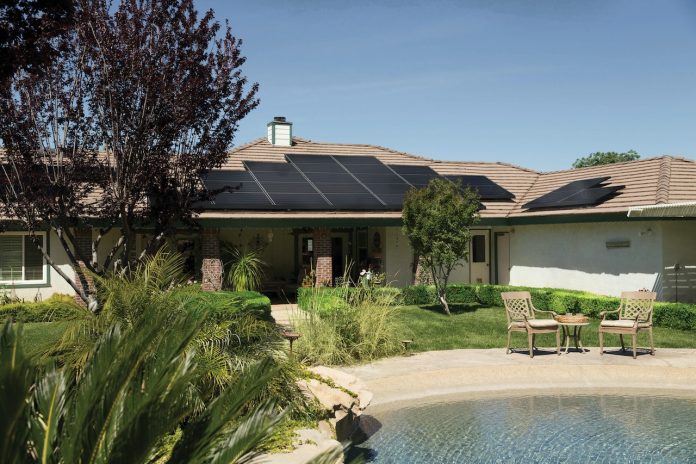Swimming pools have always been a tricky topic in relation to home value, mainly because of the variety of opinions that buyers have about a swimming pool. Some love it and are willing to pay extra while others want nothing to do with a backyard pool and will be deterred by it. Over the past two years, swimming pools have become more popular due to a desire by homeowners to make their backyard an oasis. Prior to 2020, a swimming pool added an estimated $16,137 to a home’s value. However that number has increased and homeowners can expect their pool to add over $27,000 in value. If you are a homebuyer deciding between buying a home with a pool or purchasing a home without and installing your own pool here is some basic information to help you make your decision.
If you are buying a house that has an in-ground pool there are a few extra steps to take before you commit to buying the property. Inground pools are considered part of the property and should be inspected by a professional to determine its value. A home appraisal will determine the home’s value and determine the worth of the existing pool. Pools age just like the rest of your house so the older the pool, the greater chance there will be something that needs fixed. Pools can have leaks, pump malfunctions, or cracking around the deck. Since a pool costs quite a bit of money to maintain and repair some homeowners opt for a pool inspection from a licensed pool company. An inspection will also determine how well the pool has been maintained. Remember, whatever you purchase will be yours to care for in the future. Be sure that the pool is functioning properly and that it is made of materials that will last. If something should happen to the pool it will be your responsibility to fix, maintain, and one day in the future prepare to sell.
If you are purchasing a home that does not have a pool but you would like to add one to your property you shouldn’t expect a massive return on investment. With the cost of installation and the overall cost of maintenance, a swimming pool will cost more than you will get back when you sell. But that doesn’t mean a swimming pool can’t add value and a bit of marketability to your home. If you are purchasing a home in a high end neighborhood that does not have a pool, it is likely an outlier. Adding a pool would help your chances of selling in the future since the majority of neighborhood homes will have one.
First and foremost, the type of pool that adds value to a home is an in-ground pool, not an above-ground pool. While above-ground pools are perfect for a quick dip on a hot day and cost far less to put up than an in-ground pool, they are not technically part of the property. Most often, homebuyers request that the above-ground pool be removed prior to moving in.
Shape and Size
An in-ground pool includes major construction that includes excavating your property. This alone can be an expensive ordeal depending upon the issues that might exist on your property. The cost to install a pool will be greatly affected by the pool’s dimensions. The average size of a backyard swimming pool is 12’x24’. A pool should not take up the entire backyard but it should not be so small that it is unusable. In addition to size, the shape of the pool will impact the cost and value. The most common shapes are rectangular, round, and oval. Curved shapes, such as freeform, kidney or custom shapes are more challenging to construct and will cost more. They may also not be as appealing to future buyers which could lower their value.
Materials Used
A final determinant of cost and value is the construction material. There are three main types of materials used to build a pool: concrete, fiberglass, or vinyl.
Concrete pools are the most expensive to install and take the longest amount of time to complete. They cost between $50,000 and $60,000 but can require a bit of additional financial commitment due to their cleaning needs. Concrete needs to be acid washed every three to five years to prevent mold and algae growth. The pool will also need to be re-plastered every ten years which can cost close to $2,000. Despite the cost of upkeep concrete pools have the highest resale value, last the longest, and are the prettiest.
Fiberglass pools are a mid-range pool material that cost somewhere between $36,000 and $50,000 to install. Fiberglass pools have a life-span of 30 years and require less upkeep than concrete pools because they are stain and algae resistant. Fiberglass will also not crack in cold weather so they are perfect for pools installed in Northern regions.
Vinyl is the lowest-cost material but requires the most maintenance. The average cost of a vinyl-lined pool is between $20,000 and $40,000. Vinyl pools come in a variety of shapes and designs but they do puncture easily. Vinyl liners need to be replaced every five to nine years and cost between $4,000 and $4,5000 for each replacement.
Additional Costs
Most inground pools are installed with a filtration system. The size of the pool will determine the type and size of the filtration system you have installed. A water pump is a necessity to keep your pool clean and sparkling. An average cost for a pool water pump is between $700 and $1,300 for installation. Homeowners in cool climates may want a pool heater to extend their pool usage. These cost between $1,000 and $8,5000.
Maintenance
Maintaining a pool is a year-round job that involves a variety of cleaning supplies. You will also need a variety of chemicals to maintain clean sparkling water. These include, test strips, alkalinity increasers and decreasers, calcium hardness increaser, pool stabilizer, chlorine or bromine tablets, pool shock, algaecide, and pool clarifier. Of course debris can fall into the pool so you will need a skimmer to remove it. Finally, consider purchasing a pool cover to keep out debris when you are not using your pool.
In the end, a pool will increase a home’s value because of its popularity. However, that increase in value will only go so far as the pool has been maintained. If you are purchasing a home with an existing pool ensure that everything has been maintained and the pool is free from yearly wear and tear. If you are installing a pool in a newly bought home, check the neighborhood for ideas of popular pools in your area. Then, budget correctly, properly maintain your pool, and have fun lounging in your new backyard oasis.










